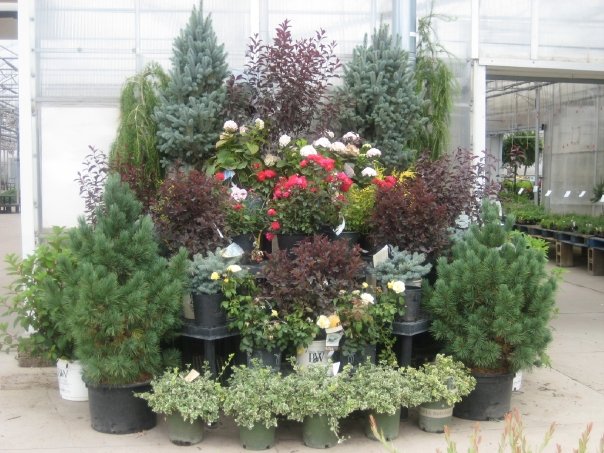(You will be glad you did)
Here’s a useful tip you should remember when you next plant trees, shrubs or any other type of plant. It’s something that professional landscapers always do, but the rest of you might overlook.
You’ve unloaded all the plants you’ve just bought from the Lawn and Garden store and fetched the shovel from the garage. Before you dig into that first clod of soil (and hopefully you have prepared it to plant by this time), do what the pros do.
Place each plant – still in its container – approximately in position. Lay all of them out, then stand back and take a minute or two to look over your layout.
Are they too close together? Too far apart? Should this one swap places with that one? Use the power of your mind’s eye to “see” what the mature plants
will look like. Think of how the colors and textures will look in relation to each other, and consider the relative height and cover of each plant.
Height can be particularly important and is easy to overlook because some plants might look quite small in relation to others right now, but in a few years they could dominate and overpower their smaller neighbors. This can change the entire look of your landscaping from your original concept. The easiest way to avoid this is to be aware of the mature dimensions of each tree and shrub you intend to plant, so be sure you have this information either from your supplier or from a quick search on the Internet or at your local library. Bad when the pizza guy can’t find your house because that cute little shrub you planted 5 years ago is now covering up the address!
Armed with this information and the amazing power of your own imagination, try moving one or more plants and take another look. Keep doing this until you’re satisfied with the way they look. Believe me, it’s a lot easier to do this before you plant them, rather than after!
If your plans are a little more complex than just a few shrubs here and there, take another tip from those professional landscape designers.
Question: Jimmie, Some young trees on my land is exposed to sustained strong winds. Should I put up a fence on the windward side of them? Thanks for your advice.
Tina L. in Prosper
Answer: Hi Tina, Yes… but maybe not the kind of fence you’re thinking of! Firstly, wind can cause a rapid loss of water vapor on the windward side of a tree through a process known as transpiration. Trees sometimes appear to be turning away from the wind as they grow. In reality, the buds on the side of the tree facing the wind have dehydrated and died, creating a lopsided effect. But the shelter you need to build should be an open fence or a hedge which will defray the wind speed. A solid fence should be avoided as it can increase air turbulence and end up making matters worse.
Question: Jimmie, I have several Oakleaf Hydrangeas and I would like to grow a few more. Can they be divided? Started from cuttings? Any hints you can give me would be greatly appreciated. Bonnie C. in Prosper
Answer: Hi Bonnie, Oakleaf Hydrangeas are robust shrubs with large deciduous leaves. They are far too stemmy to consider dividing, plus they really don’t multiply by producing additional side plants anyway. They are grown from cuttings, but you really need to have greenhouse type conditions, heating cables, and a misting system to really be successful at it or have reliable results. Your probably better off just buying a couple more verses the all the intense troubles of trying to acclimate cuttings. Until next time…
Happy Gardening.

